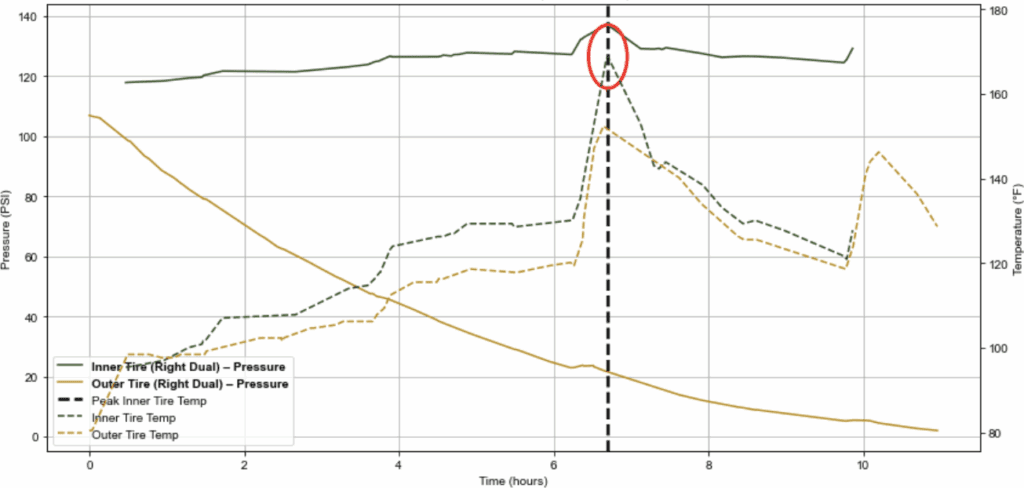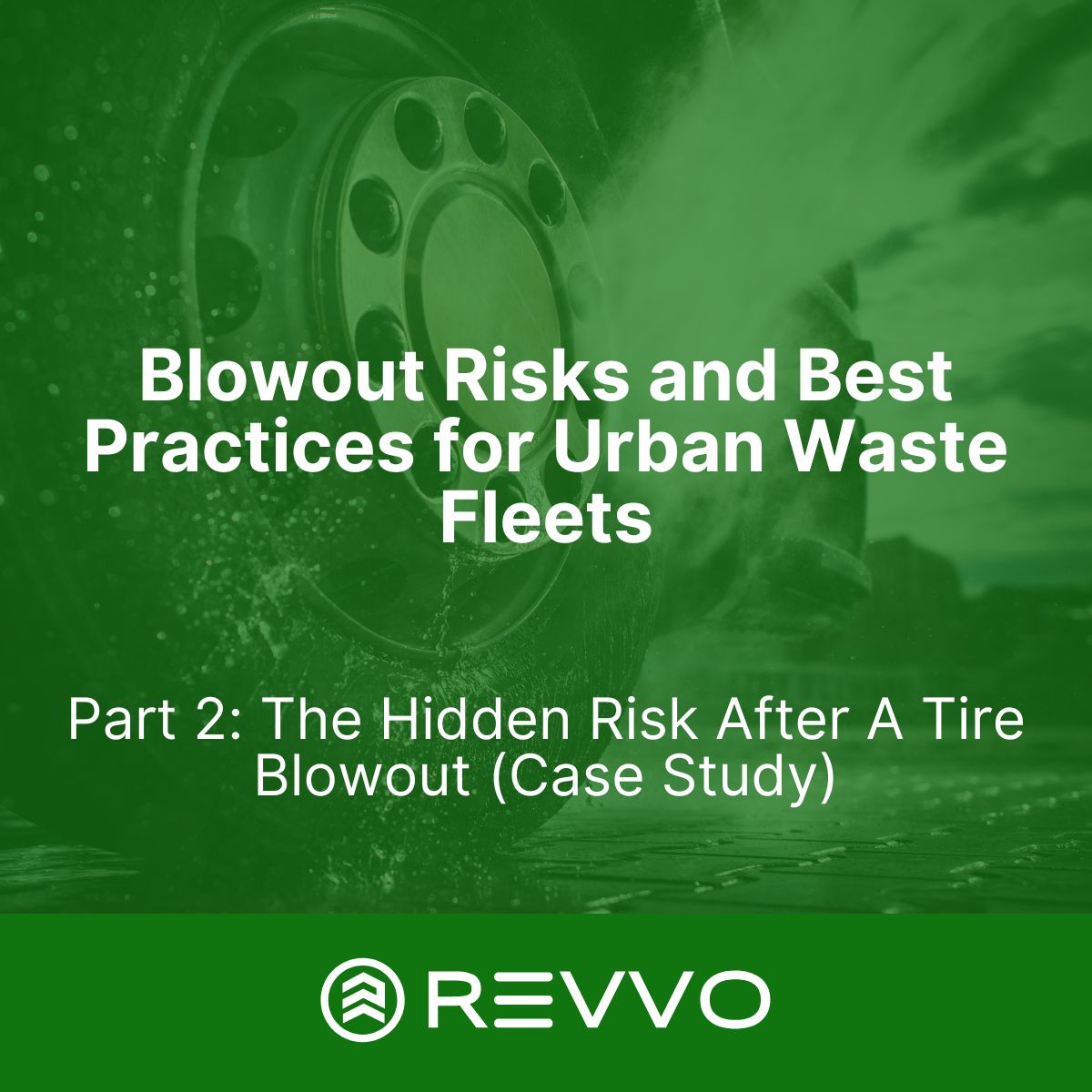Introduction
Dual tire assemblies create unique risk dynamics when one tire fails. Load transfer to the surviving tire can rapidly escalate thermal and structural stress, significantly increasing the probability of secondary failure. This case study documents such an event and highlights the operational protocols necessary to mitigate cascading failures.
The Event
During a refuse collection shift, a 3-axle frontloader truck experienced a sudden blowout of the outer right rear dual tire. Inflation pressure collapsed to zero within seconds.
With the outer casing compromised, the inner rear tire (Right Dual) assumed full axle weight. Revvo’s telemetry recorded stable pressure in the surviving tire but a rapid thermal escalation, with casing temperature peaking at 167°F, a critical thermal stress point and a precursor to secondary tire failure (Figure 1).
This thermal elevation persisted for several hours after the initial failure event. Such sustained heat in a surviving tire often accelerates degradation, with a high probability of failure within the same shift if the vehicle continues service.
Outer Tire Burst Event:
Pressure & Temperature Response In Dual Tire

Key Technical Findings
- Immediate Failure: Blowout-induced pressure collapse rendered the affected tire fully inoperable.
- Thermal Load Transfer: The surviving tire faces sharp heat buildup from sudden load redistribution..
- High Secondary Risk: Continued operation beyond the failure event increased the probability of subsequent tire loss and potential roadside immobilization.
Operational Recommendations
In dual blowout scenarios, best practices include:
- Immediate roadside intervention or controlled depot return upon failure detection.
- Prohibition of continued route operation, even if the surviving dual appears structurally intact.
- Use of real-time analytics to validate load and temperature spikes, enabling maintenance teams to quantify exposure and prioritize replacement.
Summary
This case confirms the cascading nature of dual tire failures. A single casing rupture rapidly destabilizes the axle group, with the surviving tire entering a high-risk thermal condition. Fleets equipped with continuous pressure and temperature monitoring are best positioned to identify these risks in real time, remove affected vehicles from service, and prevent secondary failures that result in roadside breakdowns, safety hazards, and unplanned operating costs.
Want to see how your fleet stacks up?
Contact us for a personalized ROI assessment



